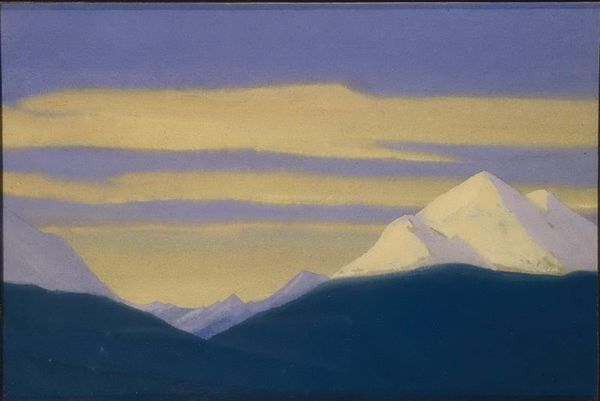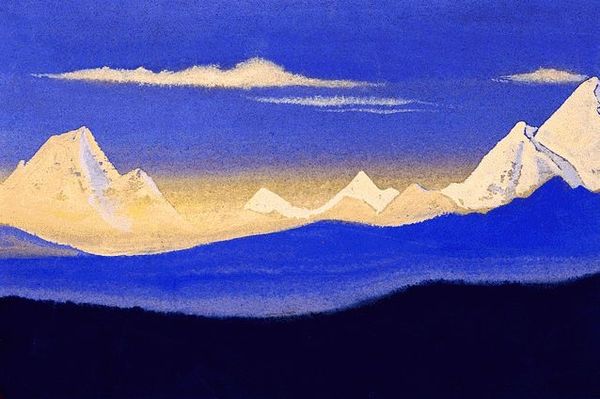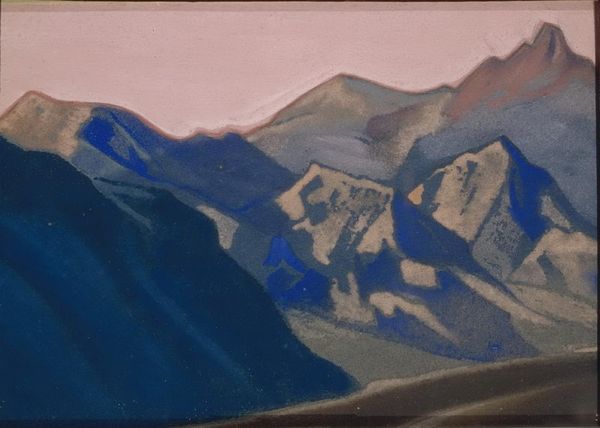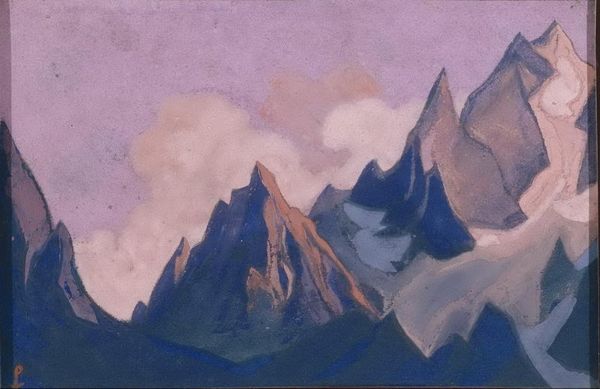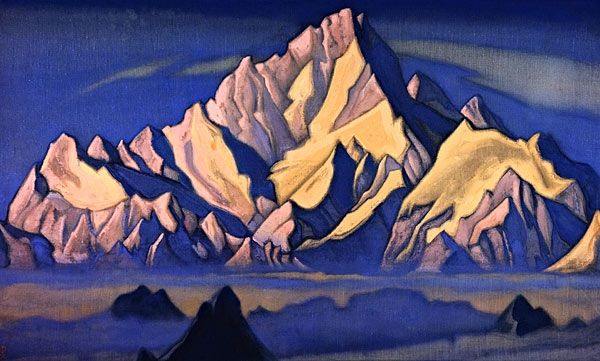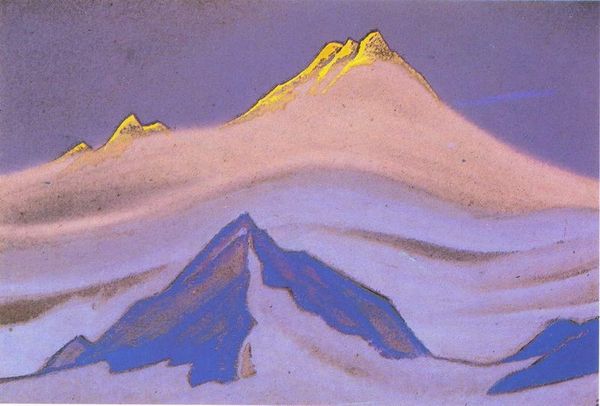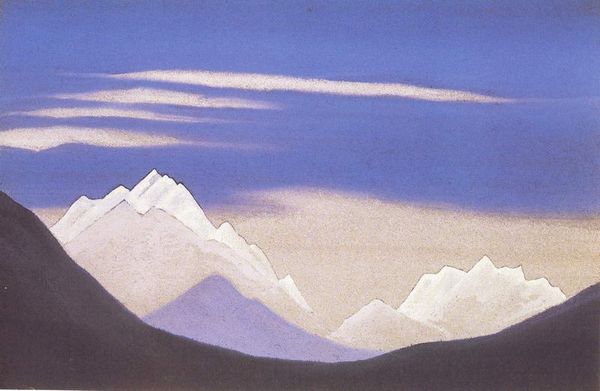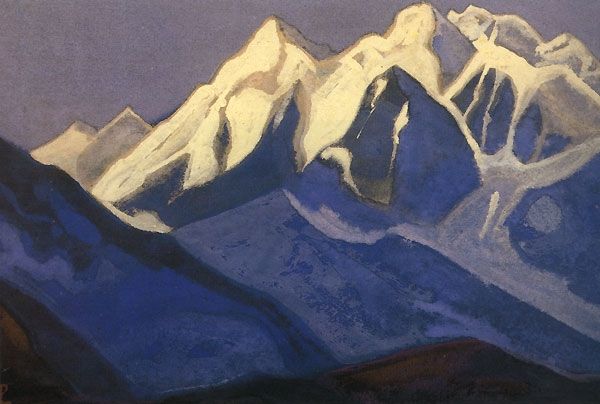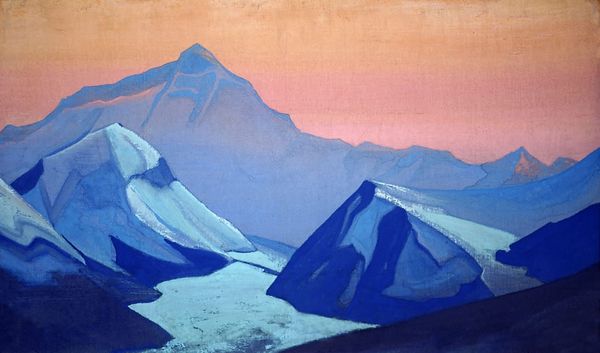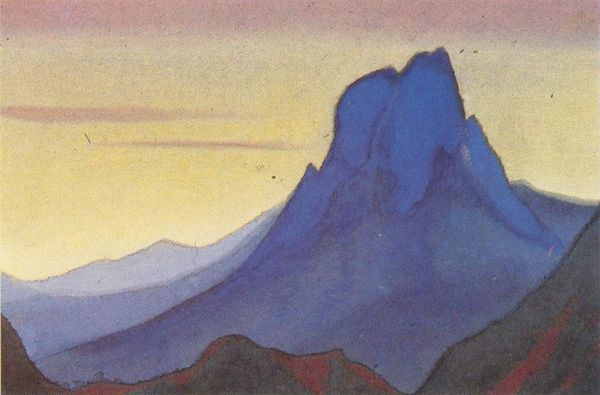
Dimensions: 30.6 x 45.7 cm
Copyright: Public domain
Curator: This is "Himalayas. Spoors of motley mountains." painted by Nicholas Roerich in 1943. It’s tempera on board. Editor: Wow, those mountains have this... otherworldly feel to them. A quiet drama. It’s the colors, I think. Blues, purples, gold against those pale peaks... Makes you feel very small, very peaceful. Curator: Roerich’s depictions of the Himalayas are interesting from a materialist perspective, especially considering his broader artistic project. He wasn't just making landscapes; he was invested in Theosophy, in spiritual movements, in ideas about cultural preservation in Asia. These weren't passive observations; they were ideologically loaded depictions shaped by his beliefs and political commitments. Editor: Absolutely. I see that spiritual quest in those colors. It's almost like Roerich isn't just painting mountains but the feeling of encountering something sacred. The way the light hits those snowy crests… it's not just light; it's an emanation, an essence. Curator: Precisely. Tempera too is interesting here. The decision to employ tempera, a very specific, older medium, is crucial. Tempera demands a degree of planning and precision, contrasting perhaps with the sublime vastness it portrays. Roerich's commitment to particular modes of production and historical art making is what really contextualizes his vision. Editor: And yet, look at those colors again. That almost childlike simplicity in the application of pigment makes the monumental peaks seem that much more majestic. This is about more than visual representation. It is emotional transportation. The Himalayas become not just a place but an idea. Curator: His work also speaks to consumption and appropriation in early twentieth century modernism. What does it mean for a European artist to represent such sacred spaces using both older and modern approaches? How were these images circulated and received within different cultural and economic systems? The art world itself had a hand in Roerich's popularity and production. Editor: I am thinking about labor! Painting a range of that size would demand intense physical and emotional endurance from the painter. I almost feel I can perceive him breathing through the creation of each pastel. Curator: Yes, and understanding Roerich’s process through material investigation brings complexity. These pieces were made within very particular contexts of belief, labor, and global exchange. Editor: Standing here, surrounded by these colors, this sense of immensity… it’s made me rethink my own perspective on these landscapes, to look closer, both inwards and outwards. Curator: Indeed, examining Roerich from these positions helps break from some formal interpretation of high art to reveal the broader conversations in art making at the time.
Comments
No comments
Be the first to comment and join the conversation on the ultimate creative platform.
